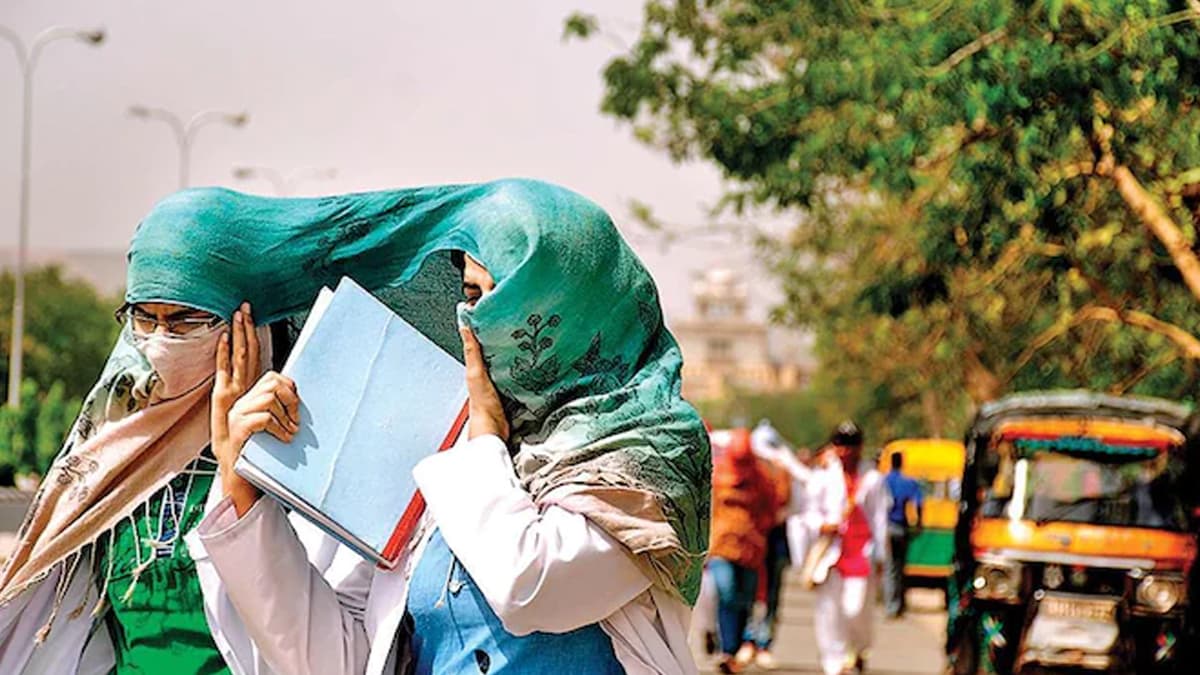Heatwave in Maharashtra: Scorcher of May Makes State Sweat; 40 Degrees Celsius Plus in 26 Districts in Past Two-Three Days
Ex-Secretary of Ministry of Earth Sciences Madhavan Nair Rajeevan says the latest data clearly indicates that the intensity and frequency of heatwaves have increased across India, and are projected to increase further in the coming years.

Mumbai, May 14: A whopping 26 of Maharashtras 36 districts are reeling under heatwave conditions with average temperatures of 40 degrees Celsius and higher in the past two-three days, as people braced and experts sounded warnings.
According to the IMD's latest data, the readings recorded on Saturday are: Ahmednagar (40.0C), Satara (40.4C), Buldhana (40.6C), Pune (40.8C), Washim, Beed and Latur (41.0C each), Osmanabad (41.1C), Solapur and Aurangabad (41.4C each), Chandrapur (41.6C), Jalna, Hingoli, Yavatmal, Gadchiroli and Nagpur (42.0C each), Amravati (42.6C), Nanded (42.8C), Parbhani, Gondia, Bhandara and Dhule (43.0C each), Wardha (43.4C), Parbhani (43.6C), Akola (44.5C), Jalgaon (44.9C). Heatwave in Maharashtra: State Govt Announces Early Summer Vacations in View of Rising Temperatures.
In the lower, 35C-plus range, the districts are: Sindhudurg (33.0C), Mumbai City (34.4C), Ratnagiri (35.0C), Mumbai Suburban (35.2C), Kolhapur (35.6C), Thane (36.0C), Palghar (36.7C), Raigad (37.0C), Nandurbar (38.0C), Sangli (38.1C), Nashik (39.7C).
"The IMD has declared heatwave conditions in different parts, including the entire coastal Konkan, Vidarbha, Marathwada, western and northern Maharashtra. This is the fourth heat-wave' alert in the current season for the coastal Konkan, and the first for May, while the other regions are already reeling under above-normal temperatures since nearly mid-April," said an expert body, Asar Social Impact Advisors Pvt. Ltd. (ASIAPL). Heatwave Alert for India: El Nino May Spur Deadly Heat Waves and Droughts in India, Says World Meteorological Organisation.
This is fraught with significant risks to public health and the concerned authorities as well as the people are advised to take immediate preventive measures to ensure safety of the masses, averred ASIAPL.
Ex-Secretary of Ministry of Earth Sciences Madhavan Nair Rajeevan says the latest data clearly indicates that the intensity and frequency of heatwaves have increased across India, and are projected to increase further in the coming years.
"This year in April and early-May, there was considerable rainfall in northern, northwestern parts due to western disturbances, and many heat waves occurred in Central and east India indicating climate anomalies. As Cyclone Mocha moves through the Bay of Bengal towards Bangladesh-Myanmar, it will influence the westerlies and cause more heat waves in north, central and coastal regions, as witnessed in the Konkan coast," said Rajeevan.
Dr Anjal Prakash of Indian School of Business and Lead Author of two IPCC Reports, said the IPCC has indicated significant seasonal variability as temperatures rise.
"The planet has already warmed by 1.16 C degrees since the pre-industrial era and this will continue at an unprecedented rate, and is anticipated to warm by 1.5C by the middle of the century," said Dr Prakash.
Each fraction of warming has major implications for the seasons, chief being wet areas shall be wetter and dry areas shall have more dry spells, rainfall unpredictability with long spells of constant rain and protracted dry spells, he said.
Co-Author of IPCC Reports Aditya Pillai of Centre for Policy Research said Maharashtra's Konkan is witnessing extreme heat waves for the second time this year and multiple warnings for Vidarbha and Marathwada regions.
"We have progressed in forecasting and communicating heatwave warnings, now we should have localised heat action plans' (HAPs) with quick response and implementation, repeatedly during the summers, besides putting in place long-term heat measures," urged Pillai.
World Resources Institute India's Lubaina Rangwala termed summer 2023 as brutal' and getting progressively worse every year, equivalent to a national emergency for cities and districts to prepare HAPs for all, including the most vulnerable.
"In April, Mumbai had temperatures higher than 35C with 80 per cent humidity, meaning the city was exposed to a heat index upwards of 50 C. (wet bulb temperature). Temperatures higher than 35 C are dangerous in coastal areas because they surpass a body's ability to cool off after exposure and lead to severe illnesses or fatalities," said Rangwala.
The ASIAPL experts are unanimous that the planet's seasons have been thrown off-gear with huge implications across sectors, including agriculture and human health.
They urged the government and local authorities to supplement heatwave warnings with clear directives to people not to step out between 11.30 a.m -3.30 p.m., health advisories for children-senior citizens, all people must stay hydrated and take other basic precautions, increasing the amount of shade in our cities, access to water and other forms of cooling.
(The above story first appeared on LatestLY on May 14, 2023 10:45 AM IST. For more news and updates on politics, world, sports, entertainment and lifestyle, log on to our website latestly.com).



